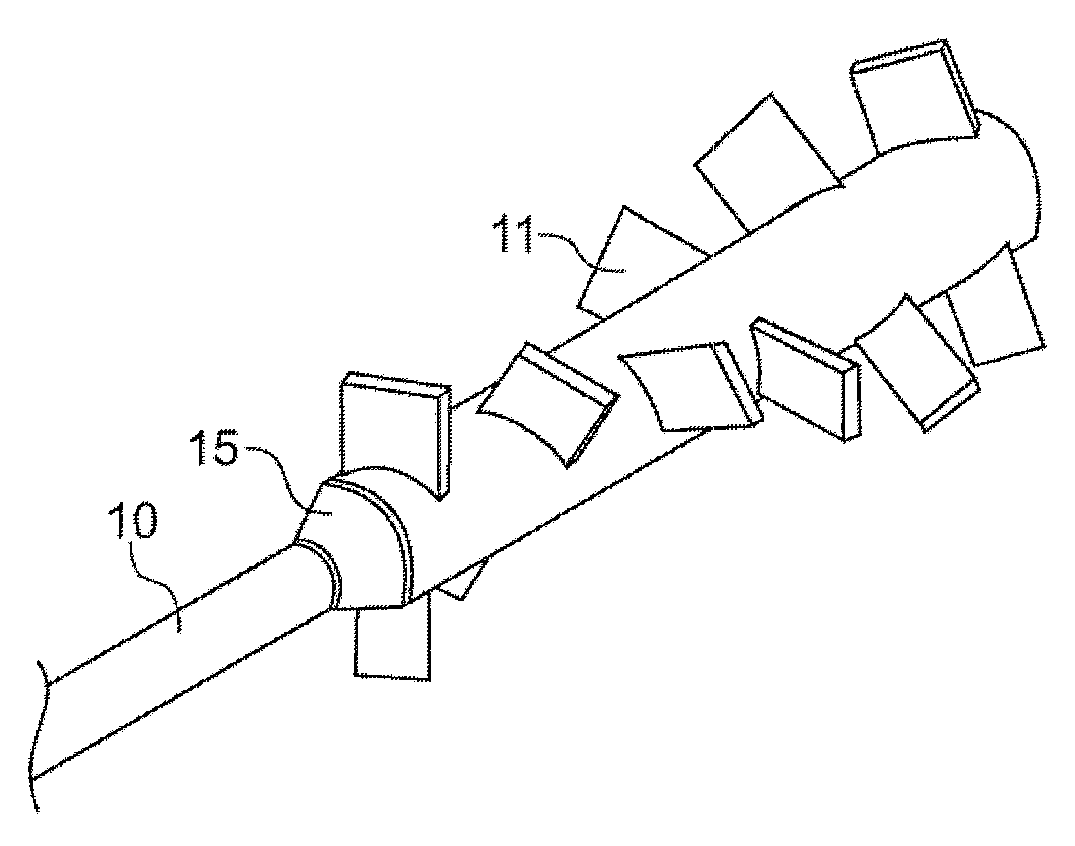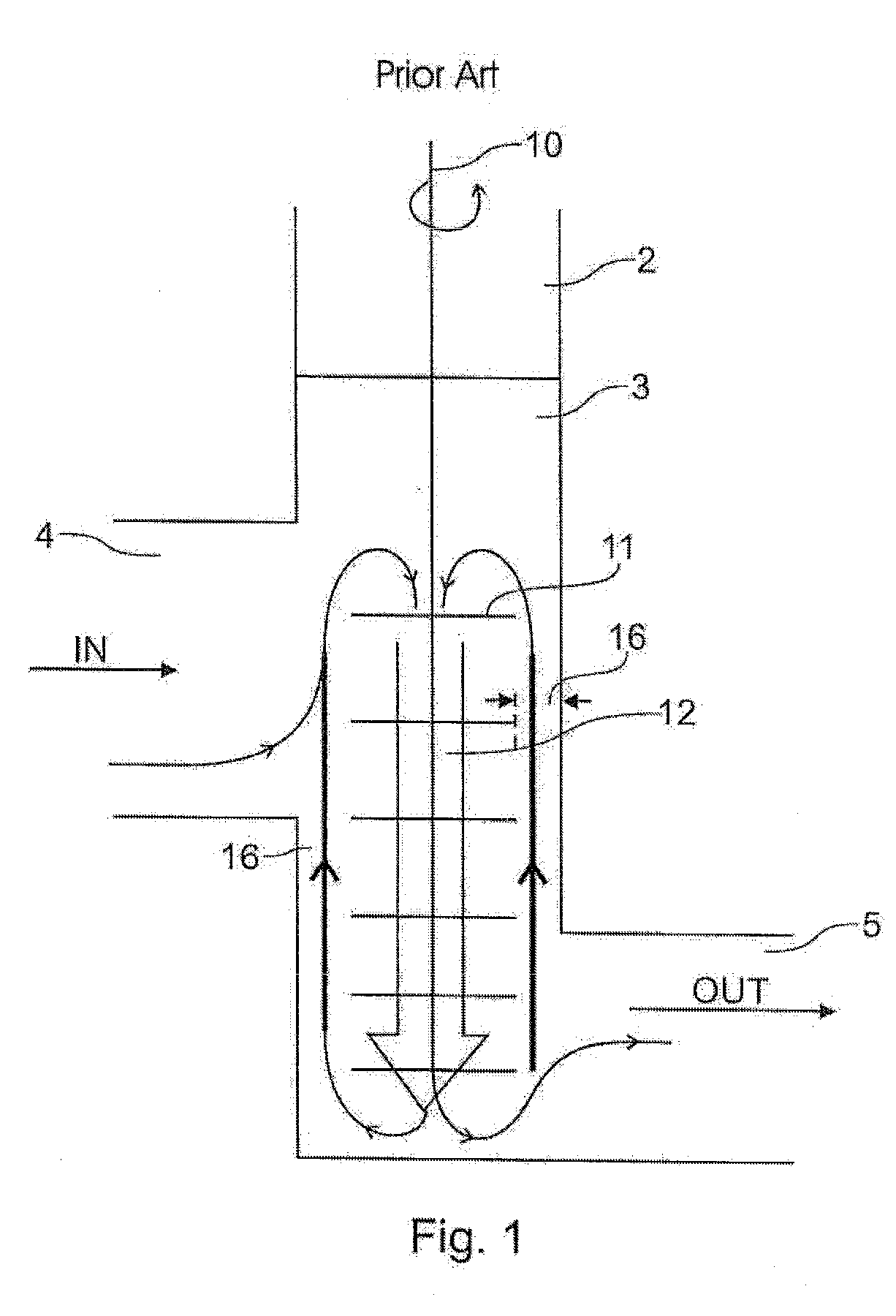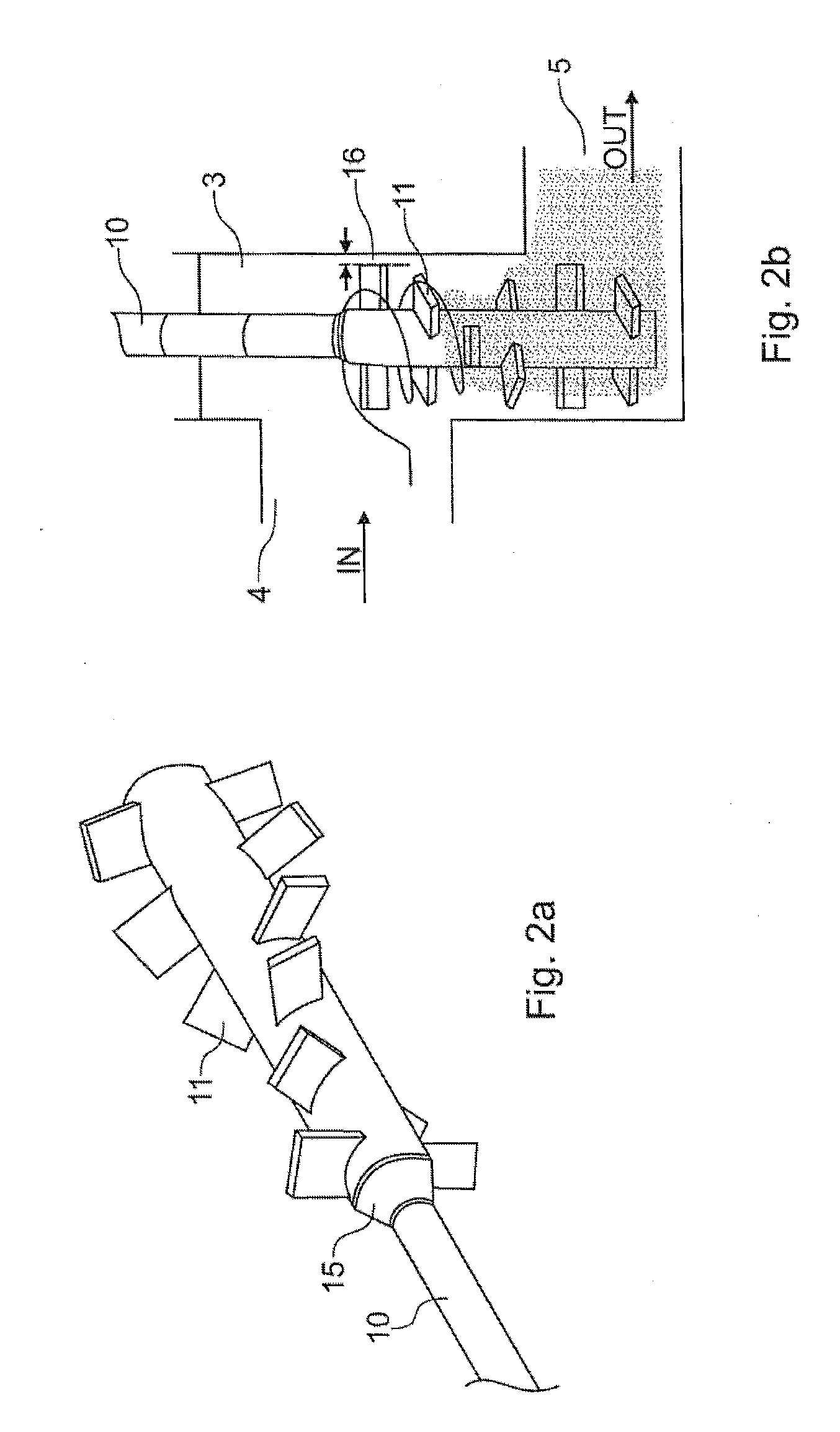Method and device for homogenizing a glass melt
- Summary
- Abstract
- Description
- Claims
- Application Information
AI Technical Summary
Benefits of technology
Problems solved by technology
Method used
Image
Examples
Embodiment Construction
[0052]According to FIG. 3, a stirrer having a plurality of stirrer blades 20, 21 is arranged in a point-symmetrical arrangement in an overall cylindrical stirring vessel 2. A glass melt is received in the stirring vessel 2. The glass melt can flow through the stirring vessel 2 continuously or discontinuously, from the inlet 4 and toward the outlet 5. The overall conveying effect of the stirrer is according to the invention imperceptible or substantially imperceptible, so that the total melt flow through the stirring device is externally driven, in particular by applying a hydrostatic pressure. For this purpose, the stirring vessel 2 can be arranged so as to extend in the direction of gravity. According to FIG. 3, the inlet 4 is arranged at the upper end of the stirrer and the outlet 5, which is equipped with a conically tapering base 6, at the lower end of the stirrer.
[0053]According to FIG. 3, the top three stirring blades 20 cover the bulk of the inlet 4. Preferably, the stirrer c...
PUM
| Property | Measurement | Unit |
|---|---|---|
| Fraction | aaaaa | aaaaa |
| Fraction | aaaaa | aaaaa |
| Fraction | aaaaa | aaaaa |
Abstract
Description
Claims
Application Information
 Login to View More
Login to View More - R&D
- Intellectual Property
- Life Sciences
- Materials
- Tech Scout
- Unparalleled Data Quality
- Higher Quality Content
- 60% Fewer Hallucinations
Browse by: Latest US Patents, China's latest patents, Technical Efficacy Thesaurus, Application Domain, Technology Topic, Popular Technical Reports.
© 2025 PatSnap. All rights reserved.Legal|Privacy policy|Modern Slavery Act Transparency Statement|Sitemap|About US| Contact US: help@patsnap.com



